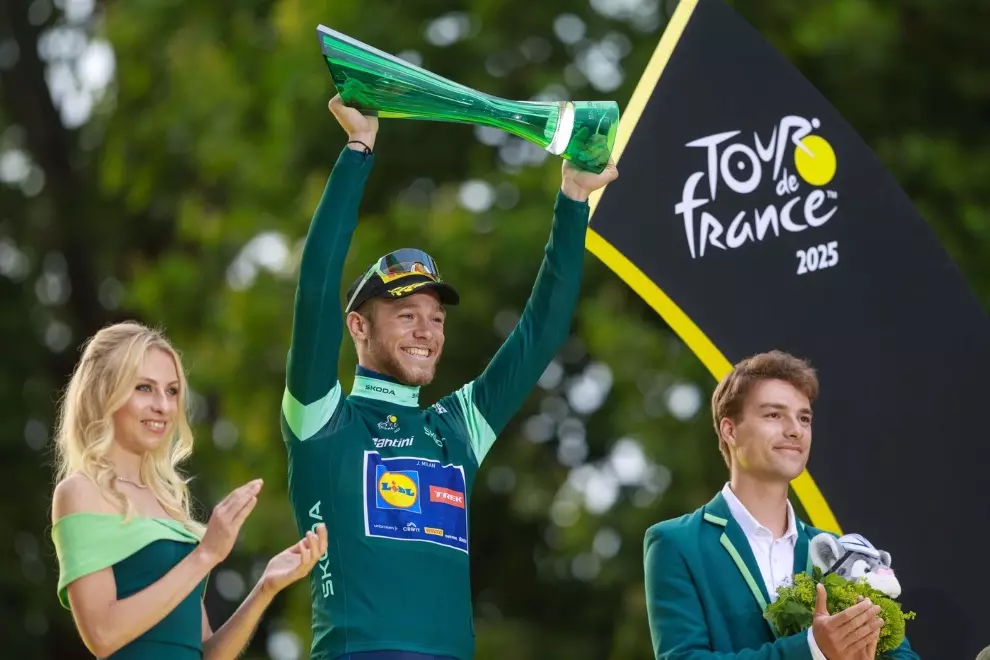Take Tuesday’s World Cup race at Gavere, which confronted the riders with long stretches of deep, rutted mud, including on climbs and hazardous descents. As has been van der Poel’s strategy in every race this season, he went for the lead as soon as there was an opening on the first of seven laps and had a lead of 20 meters after just a few powerful strokes of the pedals. Though he started on the same line as his arch-rival, van Aert was caught behind a few riders at the start, but went after van der Poel as soon as he found clear sailing. The gap between the two after lap 1 was a mere 8 seconds and van Aert tried to keep the pressure on the leader in lap 2 but, as he told Eurosport after the race, soon found himself “in the red” and eased up. Which is why he trailed van der Poel by 30 seconds after lap 2 and never got that close to him again.
As for Pidcock, because he was short on World Cup points, he was again forced to start back in the pack, in the fourth row, and was down as far as 28th shortly after the start because, as he said afterwards, “There was nowhere to go.” But as he had done in previous races, he soon started passing riders and was up to eighth after lap 1, 1:18 behind van der Poel.
The rest of the race consisted of van der Poel riding solo in front, van Aert keeping a solid lead on his two pursuers, Joris Nieuwenhuis and Lars van der Haar, and Pidcock trying desperately to make it to the podium. In that he was frustrated first by a dropped chain on lap 2, which cost him about 20 seconds, and a crash on lap 4 just moments after he had passed van der Haar to stand fourth in the race. The British Ineos Grenadiers rider quickly got back on his bike and soon passed van der Haar again. Then he went after Nieuwenhuis and finally passed him on the sixth lap – but only temporarily.
Their head-to-head battle in the last two laps was the most dramatic chapter of the race, with the lead changing hands several times before Pidcock took control in the final 300 meters to finish third, 0:58 behind van der Poel. Nieuwenhuis finished at 1:07 and van der Haar at 1:36. Van Aert came in second, 0:36 adrift, as the Big Three formed a very popular podium. Their importance to cyclocross was underscored once again by the huge crowds that attended the race and acclaimed their dominance at the awards ceremony.
After the race, van der Poel said that his victory had been anything but easy – but not because of the competition. “It was a super-hard one today. The mud was really sticking. It was harder and harder every lap to control the bike, and I was suffering at the end.” Asked why he chose to go all-out from the beginning, rather than simply follow riders until the sixth or final lap, he said, “It’s so difficult on a course like this to follow the wheel. It’s way better to ride in front and choose your own lines. The race was so hard that it was better to just find my own rhythm from the start.”
In fact, that has been his strategy in every race this season, to take control as quickly as possible and ride alone to the finish. And the reason he does it is because he can. And he can do it because he is in the best form of his life and, as van Aert said, “on another level” at the moment. But he was unable to have his way in Saturday’s World Cup race in Antwerp, the season’s first meeting of the Big Three, when he was caught behind riders, slipped out of his pedal and found himself way back in the pack in 30th place. It took him until lap 3 (of 8) to surge into the lead and he soon raced out of sight. Van der Poel eventually finished 0:29 ahead of van Aert, with World Cup points leader Eli Iserbyt coming in third, at 0:37. Pidcock had a heavy crash at the second curve on lap 1 and never quite recovered, finishing eighth at 1:14. He revealed after the race that illness had prevented him from training ahead of the race and he had lacked the energy to go for the podium.




